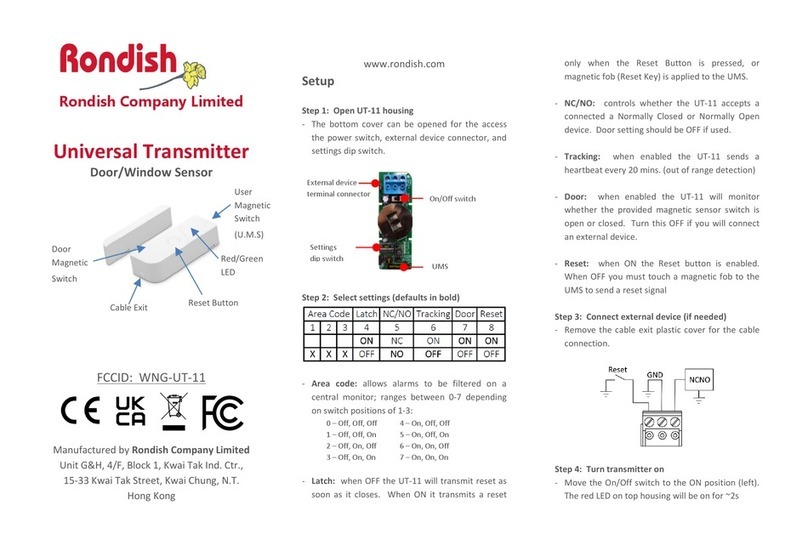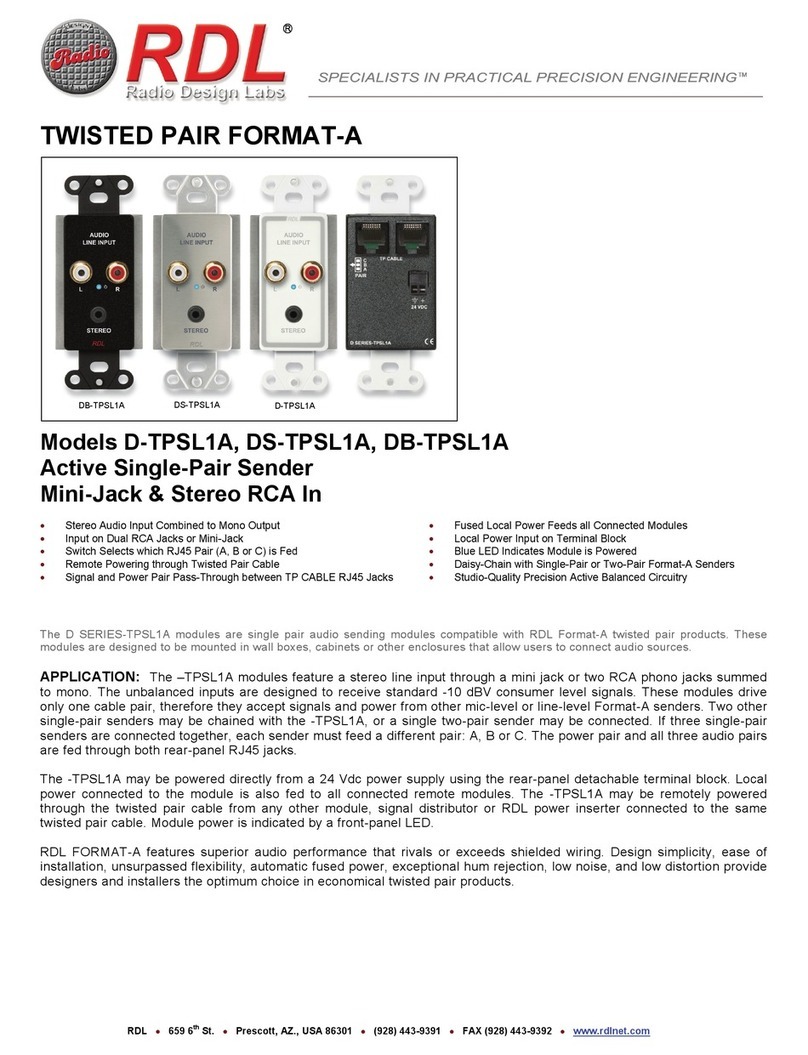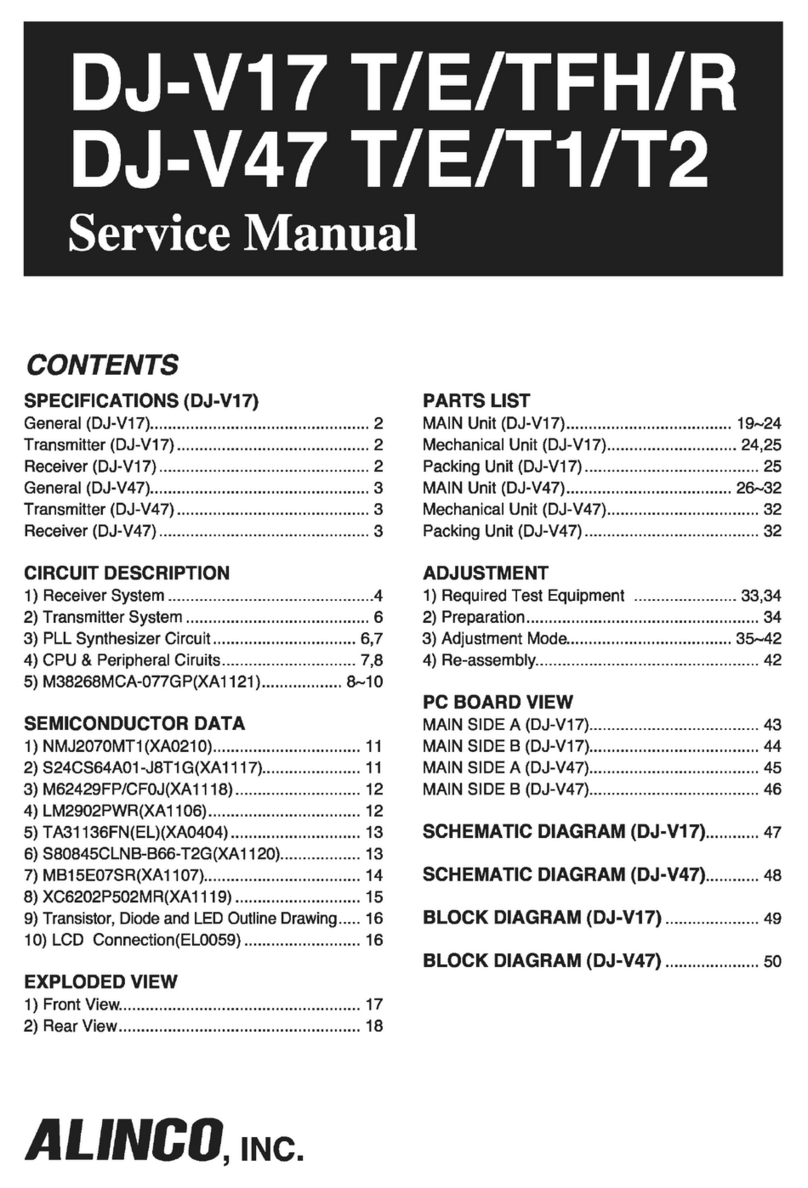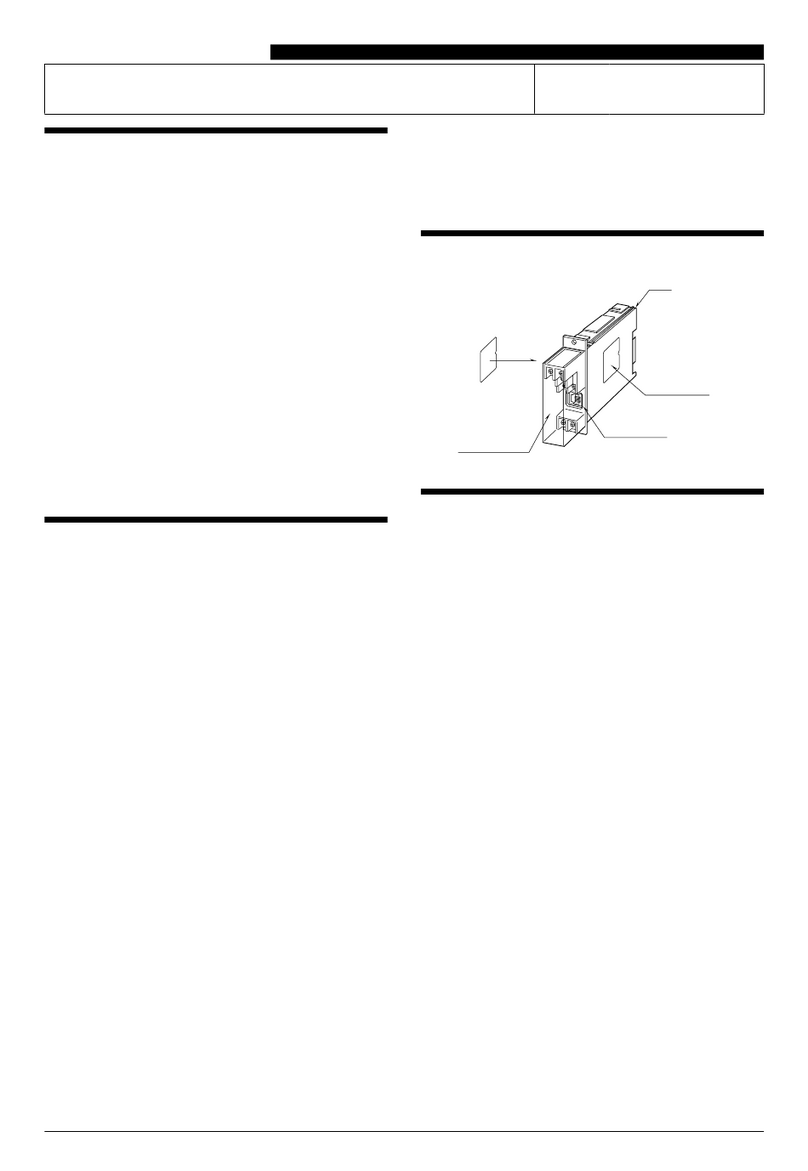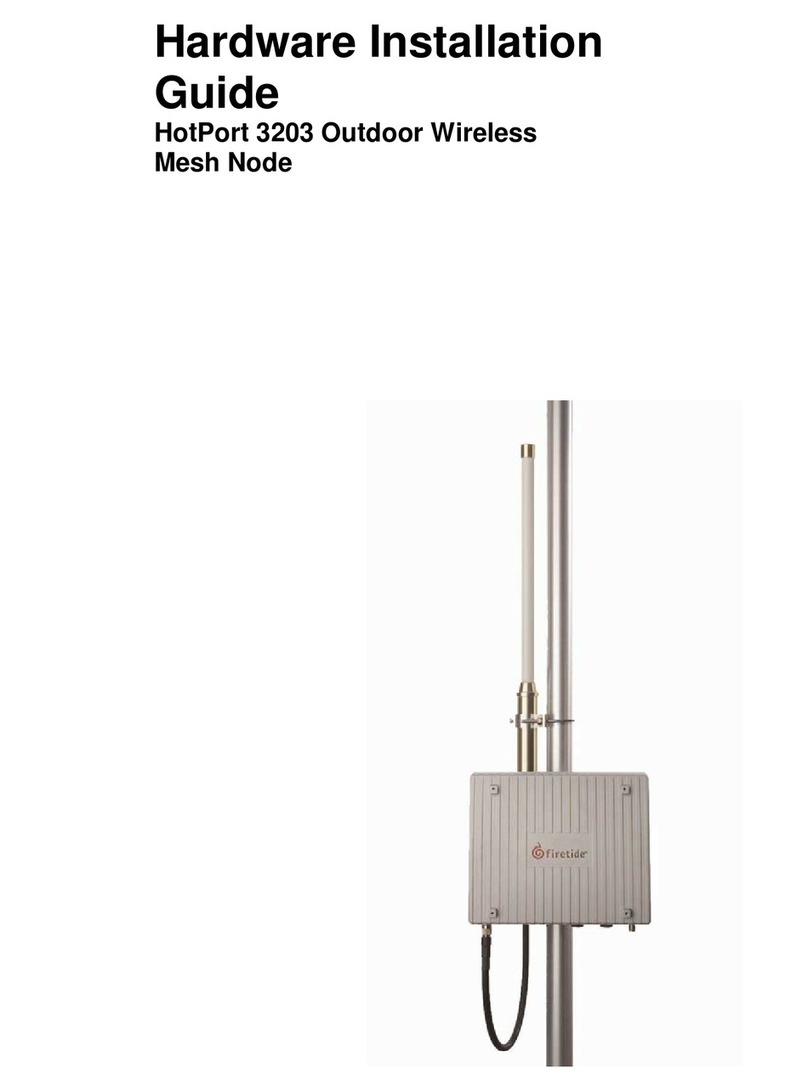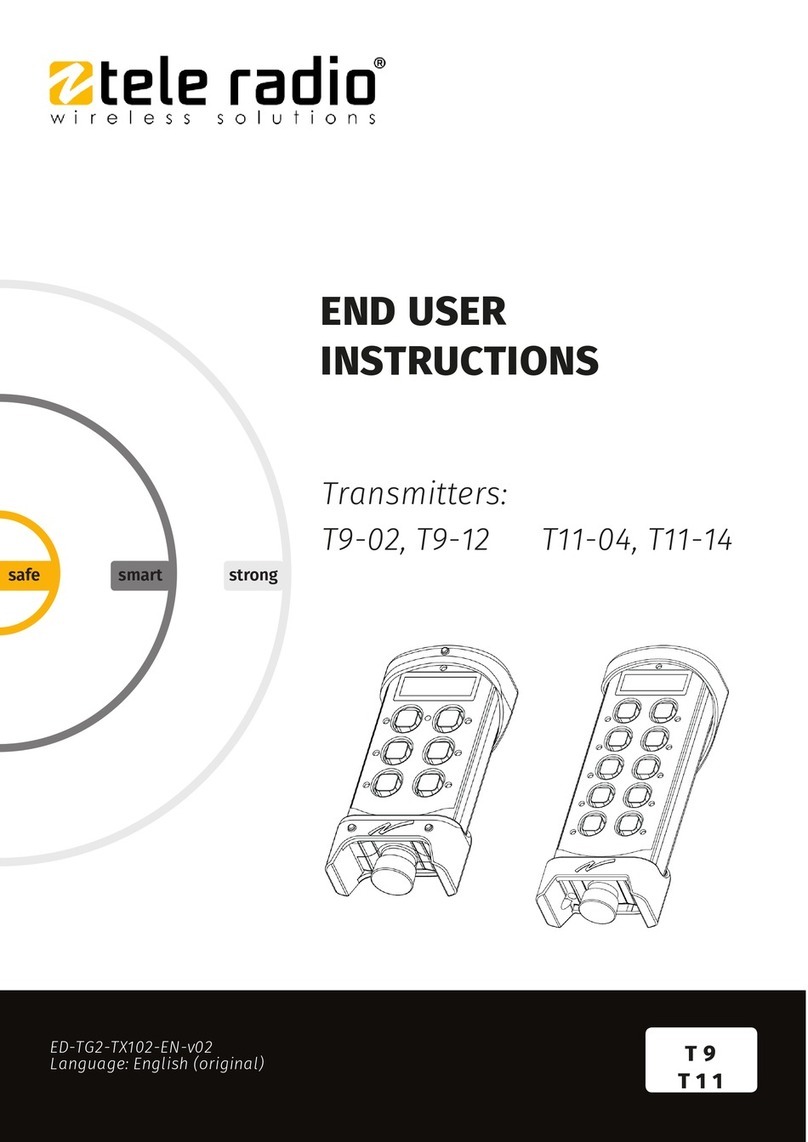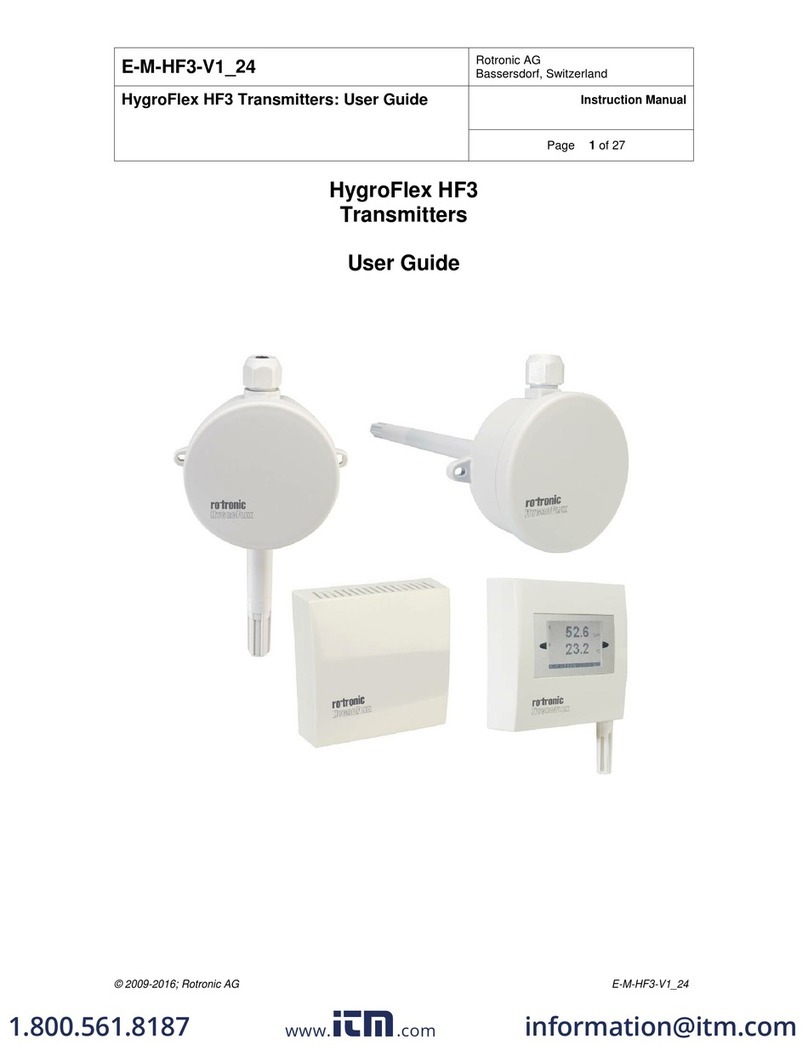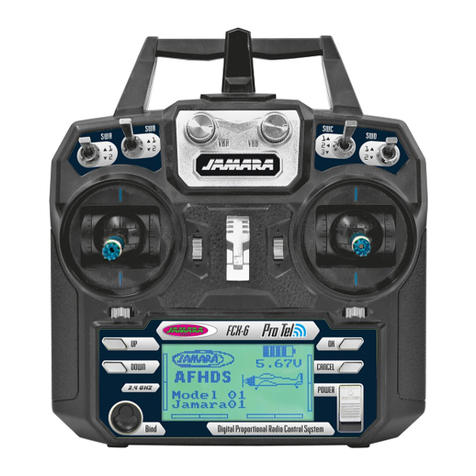
FORMAT-A TWISTED PAIR
Models D-TPS3A, DB-TPS3A, DS-TPS3A
Format-A Three-Pair Senders
TYPICAL PERFORMANCE
Inputs (3): Mic: 1.2 kΩBal. with IEC 24 Vdc Phantom; Line (left and right): 10 kΩUnbal.
Input Connection: Mic: XLR; Line: RCA Phono
Input Level: Mic: -45 to -65 dBu Balanced; Maximum: -40 dBu (HIGH Gain), -28 dBu (NORM Gain);
Line: -10 dBV Unbalanced; +10 dBV Max
Format-A Signal Pairs: A (Mic); B (Unbalanced Line Left); C (Unbalanced Line Right)
Gain: Mic: 50 dB (NORM) or 63 dB (HIGH), Switch-selectable on rear panel; Line: 12 dB
Output: RDL TP Format-A
Output Connection: RJ45
Frequency Response: Mic: 100 Hz to 30 kHz (+/- 1 dB); integral low-cut filter -10 dB @ 30 Hz;
Line: 20 Hz to 50 kHz (+/- 0.5 dB)
THD+N: Mic: < 0.1% (80 Hz to 20 kHz); Line: < 0.05% (20 Hz to 50 kHz); < 0.005% (1 kHz)
Noise below +4 dBu: Mic: < -80 dB (NORM Gain), < -70 dB (HIGH Gain); Line: < -95 dB
Crosstalk: Line to Line: < 90 dB (1 kHz); < 75 dB (20 Hz to 20 kHz); Line to Mic
(HIGH Gain): < 65 dB (1 kHz), < 60 dB (20 Hz to 20 kHz);
Line to Mic (NORM Gain): < 75 dB (1 kHz), < 70 dB (20 Hz to 20 kHz)
Headroom above +4 dBu: > 18 dB
CMRR (50 to 150 Hz): Mic: > 60 dB (HIGH Gain), > 65 dB (NORM Gain)
Indicator: PowerIn
Power Connections (2): Detachable terminal block; RJ45
Power Requirement: 24 Vdc @ 65 mA plus connected loads
Maximum Load Current: 135 mA
Dimensions: .6" (4.06 cm) W; 4.11" (10.45 cm) H; 1.89" (4.8 cm) D
Mounting Box Minimum Depth: 2.4"
EN55103-1 E1-E5; EN55103-2 E1-E4
Typical Performance reflects product at
publication time exclusive of EMC data, if any,
supplied with product. Specifications are
subject to change without notice.
Installation/Operation
STEP 1: Set the MIC gain switch to NORM (normal gain) unless consistently low mic level signals are expected. Set the MIC gain switch to HIGH
if low levels are always expected. Note: If both normal and low level mic signals are expected, the gain should be set to NORM to avoid clipping
when high levels are connected.
STEP 2: Connect 24 Vdc to the power input terminals if this module is not being powered through the twisted pair cable from another module, or if
this module is located an excessive distance from the next powered module on the cable. Note: The front-panel power LED will be illuminated if
this module is powered. If this module is powering other modules through the cable and if there is a wiring short, the short must be cleared then
power must be turned off to this module for 10 seconds to reset the internal protection circuit.
STEP 3: Connect the twisted pair cable(s) and fasten the module in its mounting box.
891-4510B
Radio Design Labs Technical Support Centers
U.S.A. (800) 933-1780, (928) 778-3554; Fax: (928) 778-3506
Europe [NH Amsterdam] (++31) 20-6238 983; Fax: (++31) 20-6225-287
TWISTED
PAIR CABLE Connection to Format-A Receiver(s)
or
Connection to Format-A Receiver(s) via
an RDL Twisted Pair Power Inserter
or
Connection to Format-A Distributor
REQUIRED CONNECTION
NOTE: Connect a 24 Vdc power supply
to the module if power is not being
supplied through a twisted pair cable
from a connected module.
24 Vdc power
connection
(see note)
TP CABLE
24 VDC
D SERIES-TPS3A
NORM
HIGH
MIC
GAIN
TP CABLE
24 VDC
SWITCH LOCATION FOR ANY MODEL
MIC GAIN SELECTOR
NORM
HIGH
MIC
GAIN
D SERIES-TPS3A
(1) + White / Green
(2) – Green
(3) + White / Orange
(4) – Blue
(5) + White / Blue
(6) – Orange
(7) + White / Brown
(8) – Brown
Pair A: Audio +4 dBu
Pair B: Audio +4 dBu
Pair C: Audio +4 dBu
Pair D: Power +24 Vdc
Tab on bottom of connector
RJ45 Standard wiring
RJ45 conductor colors shown are for 568A standard. The 568B standard may be used if the connectors at both ends of the cable are wired identically.





